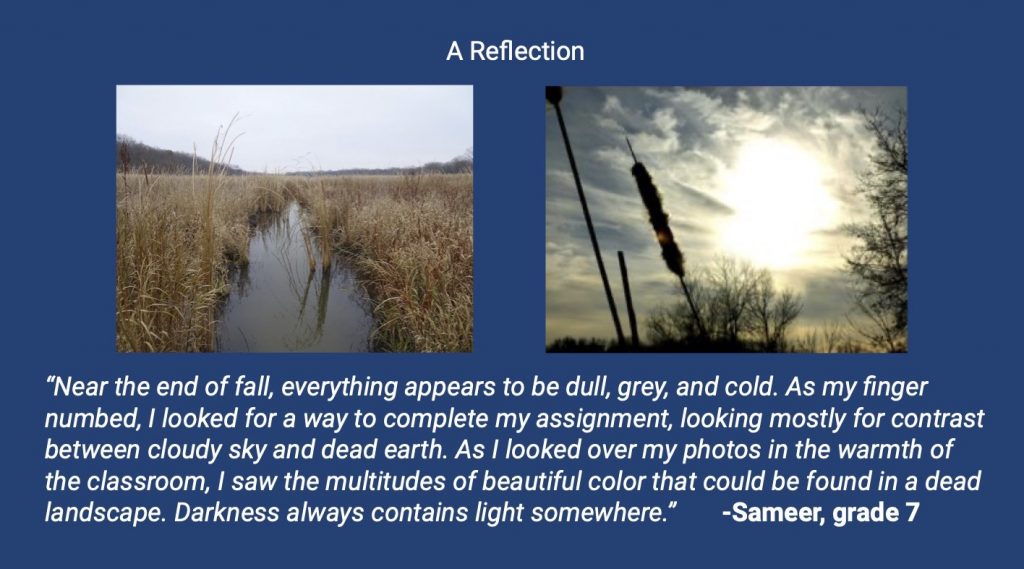We know that simply being outside is important. The act of being outside helps ground us, connect us to the natural world, and connect us to each other. Experiencing awe and wonder while we are outside exploring, playing, and learning is fundamental to our experience at FSMN.
Quakers and Environmental Education (EE)
Quakers believe we have a special obligation to include environmental education in our programs. FSMN has adopted the Friends Environmental Education Network (FEEN) statement of purpose which states:
“Friends schools have a special obligation to include environmental education in their programs in order to promote a sustainable future for all life. Our students should learn how they can best understand, preserve, and restore the natural processes, resources, and beauty so vital to the earth and to humankind’s physical and spiritual health. These goals grow directly from fundamental Quaker beliefs and testimonies.“
Connection, Inspiration, and Learning
Environmental education requires a strong grounding in a variety of learning experiences, but FSMN also recognizes an intangible element not easily reflected in curriculum and lesson plans.
We know the connection to other life and developing a sense of place grow from numerous experiences in nature. We attempt to nourish and celebrate this connection through visual art, language arts, movement, and music; thus, environmental education is woven into all curricula.
The environmental education program prepares students to be stewards of the environment and relationships by:
- validating their innate fascination with the natural world,
- instilling a sense of respect and reverence for the world around them,
- fostering their sense of place in the world and attachment to the natural world,
- modeling simple living,
- providing a solid scientific framework with which to understand environmental issues,
- providing the skills to make conscientious decisions,
- instilling a sense of hope and commitment to the future,
- helping them become responsible citizens rather than simply consumers, and
- breaking down the artificial barrier our culture imposes between the human-made and natural worlds.
Environmental education helps students:
- build critical thinking skills.
- manage symptoms of ADD and increase focus.
- develop leadership skills.
- learn how to purposefully steward things they care about.
- develop fine and gross motor skills.
- learn how to manage their stress and fatigue.
This graph created by Mark Weilbacher from the Schuylkill Center for Environmental Education does a great job of illustrating the developmental progression of environmental education at FSMN as children get older.

– David Sobel
What Environmental Education Looks Like at FSMN
Some Past Studies

Direct experiences in nature help create a sense of place and connection to the natural world, and has lasting impact on students.
Photography and Scientific Observation


7/8 Students at Crosby Farm

Peace and Justice and the Environment
We often say that the largest disruptor of peace is climate change. We cannot ignore what science tells us is happening and the impact that it is having on our planet and on people.
A Statement From FEEN
“Environmental degradation contributes to world disease, poverty, and despair. Without fertile soil, clean water and air, sufficient space, and adequate access to natural resources (renewable and non-renewable), people will not have the food, health, employment, and living conditions that will enable them to live in peace and dignity. A deteriorating environment thus becomes an important focus for Friends as they seek social justice and equity, and address root causes of violence in the world.”
As our students grow into middle school, we begin to talk about who is most often impacted by climate change and we examine systems that are in place that lead to environmental injustice.
How does a changing environment impact people? How do the choices that the most privileged people make impact those without as much privilege? What systems allow corporations to make choices that impact people in a negative way and often a dangerous way? What undergirds those systems and how do we disrupt those unjust systems to create a more just world? How do we work towards environmental justice?



